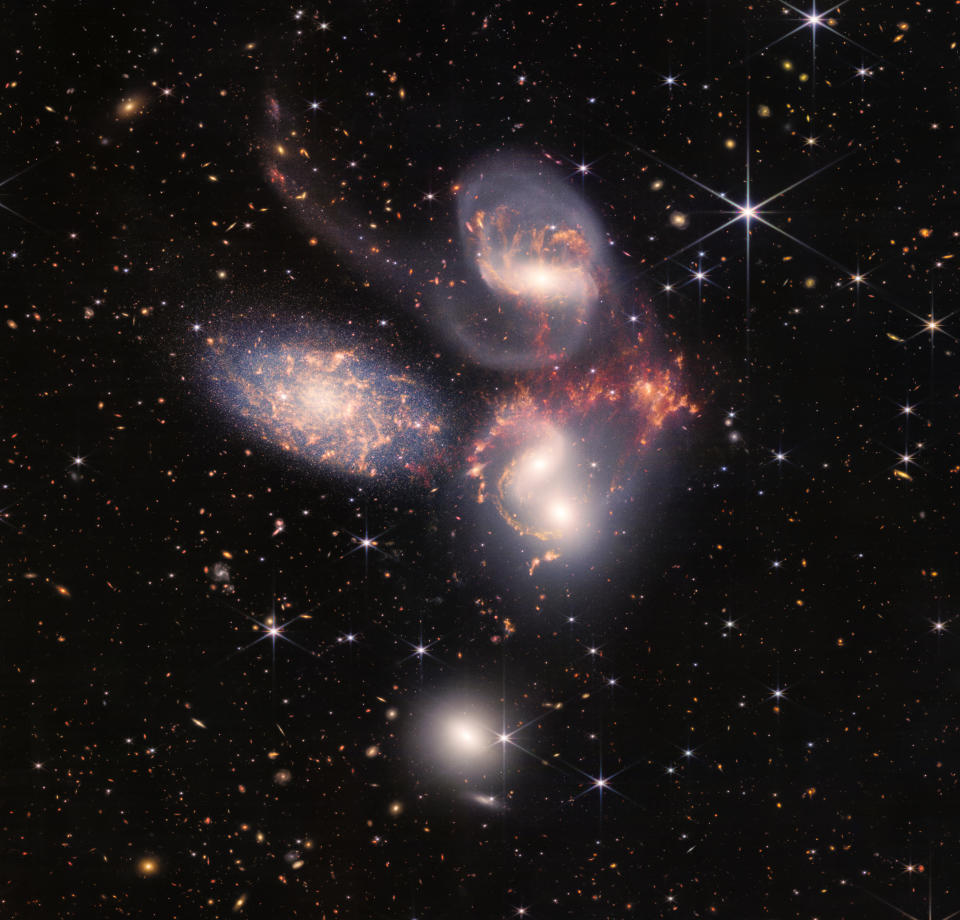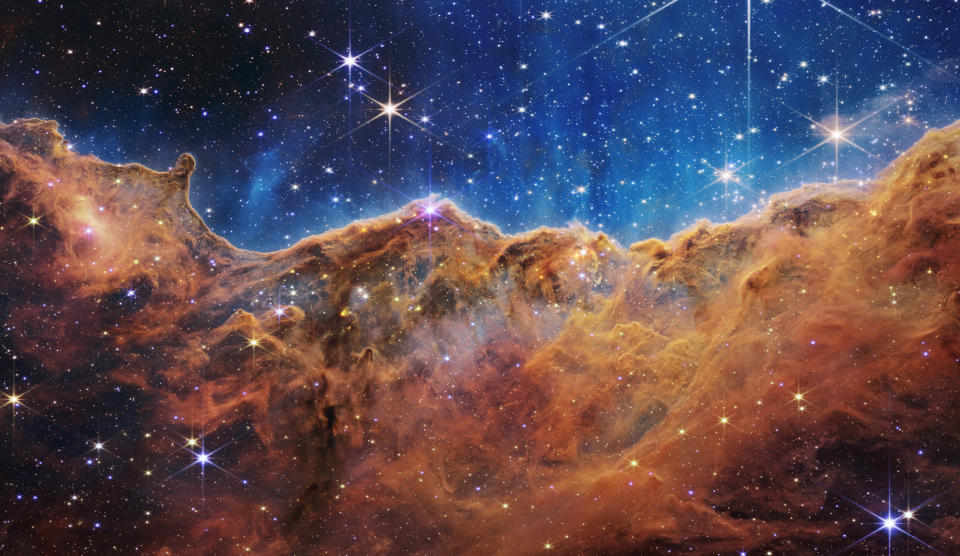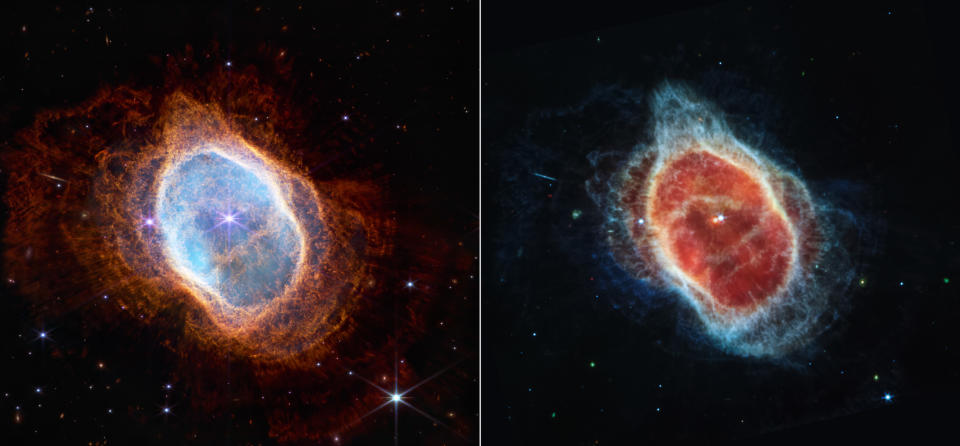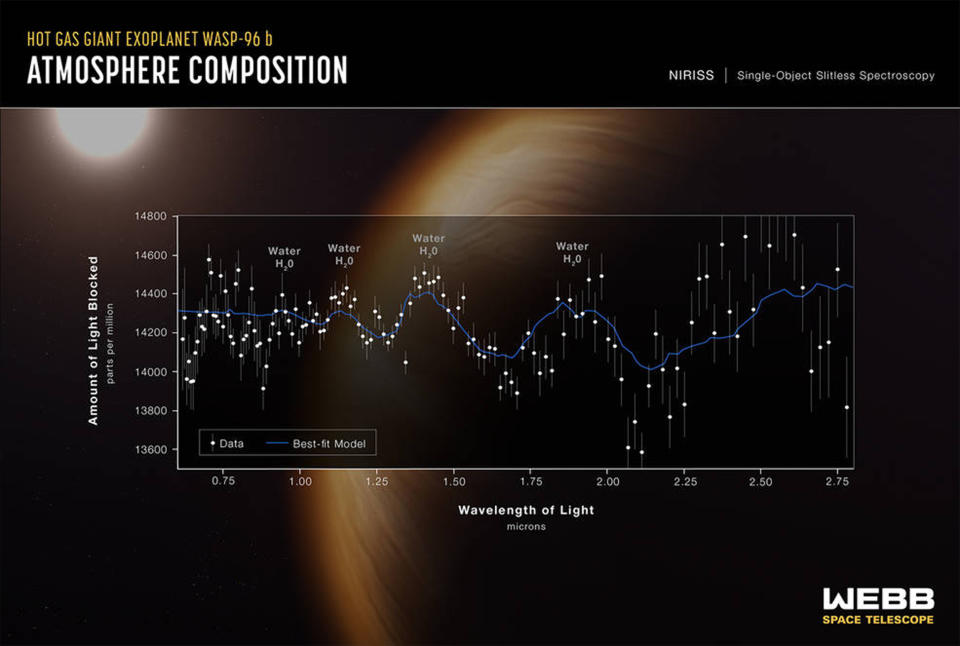James Webb Space Telescope images and data released by NASA
- Oops!Something went wrong.Please try again later.
A new era of astronomy has begun.
NASA on Tuesday released a full batch of images and data from the James Webb Space Telescope, providing a tantalizing first look at the cosmic mysteries that could be untangled in the years ahead by humanity's largest and most powerful space observatory.
Among the newly released images are breathtaking views of a distant group of five galaxies called Stephan's Quintet, never-before-seen features of the Carina Nebula speckled with dazzling stars and towering "cliffs" of gas, and exquisite new details of the Southern Ring Nebula, a huge expanding shell of gas around a dying star.
"Every image is a new discovery and each will give humanity a view of the universe that we've never seen before," NASA Administrator Bill Nelson said during an event held at the Goddard Space Flight Center to introduce the images.
The image of Stephan's Quintet included some unexpected surprises, according to NASA, including huge shock waves as one of the galaxies smashes through the cluster. Researchers also detected the telltale signs of an active supermassive black hole in the topmost galaxy — distinguishable only by material swirling around the cosmic behemoth.

The enormous mosaic, characterized by intense starburst regions and delicate-looking wisps of gas and dust, will help scientists study how galaxies interact and merge with one another.
The Webb telescope's view of the Carina Nebula shows a young, star-forming region called NGC 3324. The observatory's instruments are so powerful that stellar nurseries and individual stars can be seen that were previously obscured, NASA officials said.
Pillars of gas create a dramatic landscape in the image, with ultraviolet radiation from newborn stars carving out features known as "Cosmic Cliffs."

The Webb telescope also spied the last "performance" of a dying star located more than 2,000 light-years away. The observatory's image of the Southern Ring Nebula shows rings of gas and dust expelled by a star in the final throes of its life.
Webb's infrared instruments brought the nebula's second star into sharp focus, revealing it to be dimmer and cloaked in dust. Scientists said these types of observations will help them better understand the life cycle of stars, including how dying stars shape and transform their environment.

The long-awaited release of the Webb telescope's first images comes after NASA and the White House gave the public a sneak peek a day early, unveiling a stunning view captured of a patch of sky overflowing with bright galaxies.
The so-called "deep field view" showed massive clusters of galaxies in the foreground that are magnifying and distorting light from fainter and much more distant celestial objects behind them.
That image, along with the full series released Tuesday by the space agency, hint at the sheer power and unparalleled capabilities of the $10 billion-Webb telescope. Scientists have said the observatory, which will be able to see deeper into space and in greater detail than any telescope that has come before it, could revolutionize human understanding of the universe.
This week's release included the Webb telescope's first spectrum of an exoplanet, showing light emitted at different wavelengths from WASP-96b, a planet outside our solar system that was discovered in 2014. WASP-96b, located more than 1,000 light-years away from Earth, has roughly half the mass of Jupiter and is primarily made up of gas, according to NASA.
While WASP-96b is too hot and located too close to its parent star to be considered habitable, Webb's spectrum revealed the presence of water vapor in the planet's atmosphere.
Webb's observations of exoplanets, including with instruments sensitive enough to study the chemical fingerprints of their atmospheres, could help guide the search for potential life beyond Earth.
Lisa Kaltenegger, director of the Carl Sagan Institute at Cornell University, will be using the Webb telescope to do just that. Kaltenegger said Tuesday's event puts "the cosmos at our fingertips," adding that she's already dreaming about the exoplanet observations that will now be possible.
"For the first time, James Webb allows us to collect enough light from small planets," she said. "And that makes all the difference if you're looking for another potential Earth."
Kaltenegger's search for alien life in the universe starts with studying Earth through its history to get a better understanding of the chemical ingredients that helped life emerge on the planet.
Among the celestial targets that she said she is most excited to observe is the Trappist-1 system, where seven rocky, Earth-size planets were found orbiting a star located about 40 light-years away.
The Webb telescope, a collaboration among NASA, the European Space Agency and the Canadian Space Agency, launched into space Dec. 25, 2021. After spending more than six months testing and configuring the spacecraft's various instruments, NASA officials said the observatory's science operations are now ready to begin in earnest.
The spacecraft, which is the size of a tennis court, is equipped with infrared "eyes" that can pierce through dust and gas that might otherwise make some stars, galaxies and celestial targets undetectable. As such, the telescope is expected to provide first-of-its-kind infrared views of the universe, and capture some never-before-seen cosmic objects.

Telescopes like Webb can essentially peer back into the universe's history because it takes time for light to travel through space. This means that light detected by Webb from the most distant galaxies in the cosmos provides insight into the universe as it was billions of years ago.
Billed as the successor to the prolific Hubble Space Telescope, the Webb observatory is designed to study the earliest stars and galaxies in the universe. Researchers have said that Webb could unlock mysteries from as far back as 100 million years after the Big Bang — observations that could help astronomers understand how the modern universe came to be.

